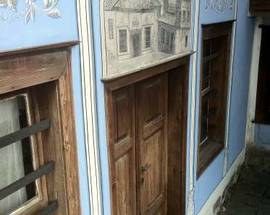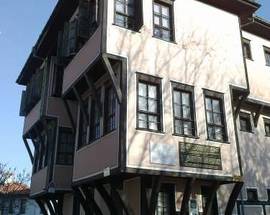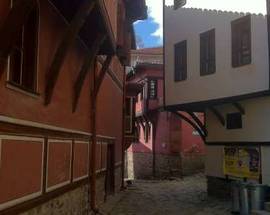National Revival Architecture
more than a year agoStarting in the second half of the 1700s the movement continued to grow in strength throughout the 1800s and culminated in the April Uprising of 1876 and the country's liberation from Ottoman rule in 1878.
In this period a new middle class Bulgarian emerged, accumulating wealth through trade with the countries of the Ottoman empire (the trade routes met in Bulgaria). Bulgarians began migrating from their remote villages back to the towns, crafts thrived. They funnelled much of this wealth and new-found self-esteem back into encouraging literacy, education, culture and a sense of national identity among the Bulgarian population. The Orthodox church, which had managed to preserve itself, hidden away in mountain monasteries, provided much needed spiritual guidance.
Plovdiv's Old Town is a living museum of the type of National Revival architecture that developed there (there were regional differences) in the early to mid 1800s. The residential buildings here are exceptionally rich, most could be described as mansions. They demonstrate a love for fancy decoration, bright colours and wall painting. One can imagine how proud their owners must have been of their achievement.
There are two main types of houses in the Old Town: asymmetrical and symmetrical depending on whether all rooms lead off symmetrically from one main central room (hayet) or not. The hayet was the main sitting room and the most elaborately decorated in the house, sporting a wood carved ceiling with a central sun and geometric shapes. Typical for the hayet are alafrangi (literally 'in the French way') wall niches with decorative murals such as vases of flowers or painted curtains creating a fake window.
Most revival houses are elaborately decorated. Walls, ceilings and parts of the façade were painted with floral motifs; ceilings, porches, doors and furniture were carved out of wood and painted.
By the mid 19th century Classicism infiltrated from Western Europe and the Plovdiv style is evident only as external decoration.
Public buildings also changed during the Revival period, having previously been the domain of the Ottoman Turks. As they took on more of the trade by the middle of the century Bulgarians started building commercial buildings. They erected clock towers, altering the town's silhouette, which was previously dominated by the minaret. During the Revival church construction moved from small to large scale, from plain ostentatious.








Comments